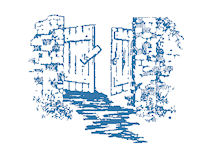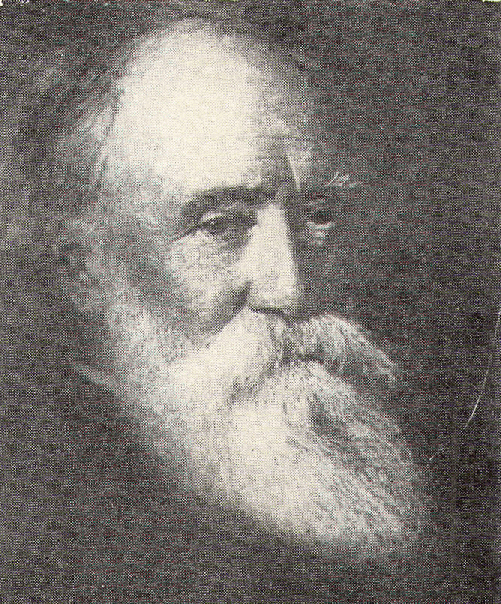


|

|

| Level* | |||
|---|---|---|---|
| 1900 | Squirrels and Other Fur-Bearers | 2 | Natural History / Animal Stories / Realistic |
Author biography from the Junior Book of Authors, 1935; courtesy of the H.W. Wilson Company
As seven-year-old John Burroughs explored the woods one day, his attention was arrested by a small blue warbler with a white spot on its wing. The sight of this strange bird thrilled him as no other bird before and awakened within him a resolve to know more about the birds some day.
John went back to the work on his father's farm, for there were hundreds of chores to be done. He milked the cows, chopped wood, gathered sap from the maple trees, helped his mother churn butter, threshed flax to be made into home-spun shirts (how they scratched the skin!) and took part in the sheep-shearing which provided wool clothes for the winter. This farm, his birthplace, stood on the slope of Old Clump (later renamed Burroughs Mountain) in the Catskills, just above the village of Roxbury, New York.
Of the ten Burroughs children, John was the only one who, as his father said, "took to larnin'." The others, like their parents, barely learned to read and write. Even John was not thought a brilliant scholar in the rural schools he attended, being a poor speller. But he was determined to learn. Once, when his father refused to get him a grammar, he earned enough money to buy one by making small cakes of maple sugar and peddling them in the village.
At seventeen he left home in search of work and further knowledge. For nine years he taught school in various communities, mostly in New York state, completing his meagre schooling with a few months' study at the Ashland Collegiate Institute in Greene County and at Cooperstown Seminary. During this time he married (at twenty) Ursula North, of Olive, New York, and began to write nature essays. His boyhood interest in birds was reawakened by the reading one day of Audubon's bird book, and he began a systematic study of feathery creatures with high enthusiasm.
At twenty-six he suddenly abandoned teaching and went to Washington, D. C., where he worked as a clerk in the Currency Bureau of the Treasury Department for nearly ten years. In Washington he formed the most important friendship of his life—with Walt Whitman, the poet, who was eighteen years his senior. It was Whitman who inspired, and even helped write, his first book, Notes on Walt Whitman as Poet and Person. Whitman also gave the title to his first nature book, Wake-Robin.
In his thirty-sixth year Burroughs resigned his government position and resumed the outdoor life of his youth. He purchased a farm near Esopus, New York, on the west bank of the Hudson, about eighty miles north of New York City. There he built a house which he named "Riverby" and cultivated fruit-trees, grapes, and berries. Apart from the house was his small study, made of bark. In the hills about a mile away he had a secluded cabin, "Slabsides," where it was his delight to cook breakfasts of bacon and pancakes. His summers, later in life, were usually spent at a rustic farmhouse, "Woodchuck Lodge," on the farm near Roxbury where he grew up. An old haybarn, in which he used to quake with fear of ghosts as a boy, was his literary headquarters while there.
For nearly half a century in these places Burroughs observed the birds and animals, read, and wrote. His books, more than twenty-five in number, were mostly nature essays and they recorded the changes in his own inner life. He traveled quite extensively. He camped in the Yosemite with John Muir and in the Yellowstone with Theodore Roosevelt. Among his close friends in later years were Thomas A. Edison and Henry Ford.
Burroughs was a national figure and many people made pilgrimages to him. His snowy-white beard, expansive fore-head, and slender figure were familiar in every part of the land thru the medium of countless photographs. Children said he looked like Santa Claus. He was awarded honorary degrees by Yale, Colgate, and the University of Georgia.
He died while traveling on a train from California to his home in New York. He was buried on his eighty-fourth birthday by the rock where he used to sit and dream as a boy, on the farm of his birth. A bronze tablet was inscribed with a line he wrote in his youth: "I stand amid the eternal ways."
John Burroughs' books that younger readers like especially are: Birds and Bees, Sharp Eyes, Squirrels and Other Fur-Bearers, Wake-Robin, and Bird Stories From Burroughs.
| LEVEL | AGE RANGE |
| 0 | Kindergarten |
| 1 | Grades 1 to 3 |
| 2 | Grades 4 to 6 |
| 3 | Grades 7-9 |
| 4 | Grades 10-12 |
| Copyright (c) 2005 - 2023 Yesterday's Classics, LLC. All Rights Reserved. |